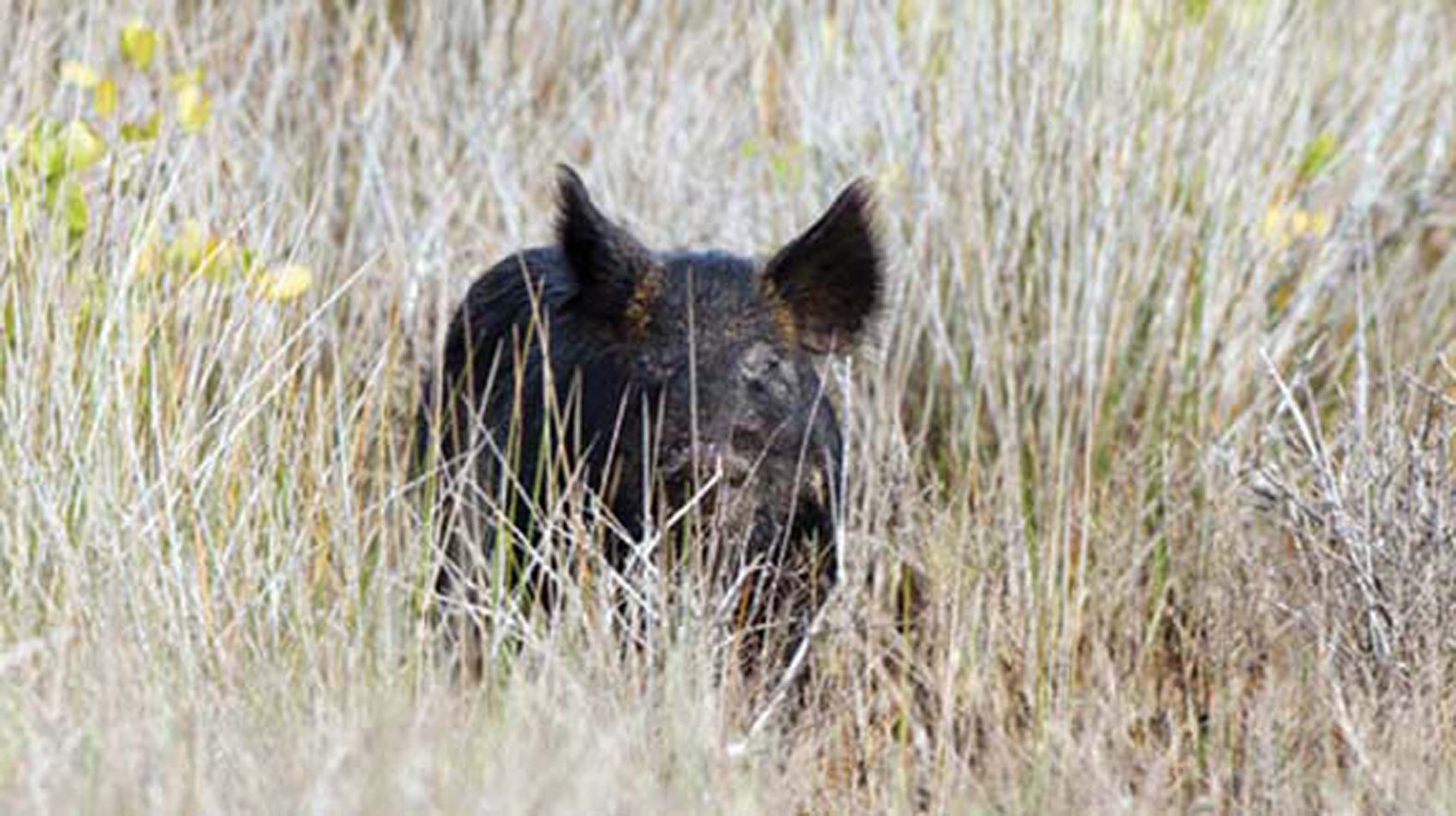HOME
Making sense of Kaput, dollars and not much sense

By Andy Anderson
Texas Agricultural Commissioner, Sid Miller, recently announced the approval for the use of poison in the fight against the feral hogs in Texas. With recent agricultural damage estimated at about $50 million annually, there is a lot of incentive to find a solution.
Currently the State of Texas lists the feral hog as an invasive species. Texas Parks and Wildlife lists the feral hog as an exotic animal, meaning there are no restrictions in hunting them. The feral hog is a highly sought after animal that is hunted in a variety of ways. During the day and at night hunters use thermal and night vision, using dogs to locate and catch them. They are trapped in large numbers and dispatched in larger numbers from the air using helicopters.
There are buying stations throughout Texas that buy the trapped hogs for use in dog food or exported as a delicacy. The feral hog, regardless of its invasiveness and damage, is a highly intelligent adversary that’s both respected and hated.
Ranchers and farmers despise the feral hog for the damage they cause to crops and range land, fences, roads and water sources. Anyone who has been in a tractor bailing hay and has run into an unsuspecting area where hogs have rooted up instantly develops an intense hatred for pigs.
Kaput Hog Bait, manufactured by Scimetrics, is a Warfarin based product, similar to rat poison. Warfarin is also approved and used as a medication in humans for a variety of illness. However, Warfarin in certain doses or from long term exposure can result in death or serious injury to humans. The same goes for feral hogs.
The EPA warning label for Kaput is “CAUTION,” which means low toxicity or a category III toxic substance. Category III Toxicity to humans means a person will have to ingest and/or be exposed to certain levels of the substance to be harmful, cause injury or death. Warfarin also interacts with other medications a person maybe taking.
To read more pick up a copy of the April 2017 NTFR issue. To subscribe call 940-872-5922.
HOME
Preparing Spring Gardens

By Hannah Claxton | Editor
The North Texas area is located within USDA Hardiness zones seven and eight. The zones are categorized by predicted low temperatures for winter and timing of the first and last frosts.
Zone seven usually has winter low temps between 0 and 10 degrees F with the average date of the first frost falling between Oct. 29 and Nov. 15 and the average date of the last frost falling between March 22 and April 3.
Overall, these two zones have similar climates and growing conditions, making the options for timing and variety within a garden very similar.
In these zones, cool-season crops should go in the ground in March, meaning that soil preparation should start now.
To read more, pick up a copy of the January edition of North Texas Farm & Ranch magazine, available digitally and in print. To subscribe by mail, call 940-872-5922.

HOME
Equine Vaccinations

By Heather Lloyd
Vaccinations are a critical component of maintaining the health and well-being of horses, especially in environments where they are exposed to other animals, such as in the sport, show and performance arenas. Horses, like all animals, are susceptible to various infectious diseases that can spread quickly and cause serious harm.
A routine vaccination schedule helps prevent the spread of these diseases by preparing the horse’s immune system.
To read more, pick up a copy of the November edition of North Texas Farm & Ranch magazine, available digitally and in print. To subscribe by mail, call 940-872-5922.

HOME
Wichita Falls Area Cattlewomen

Having herds on a controlled breeding schedule means that we have a predictable calving schedule, and while it’s only over a couple of months, for us it does fall right after the start of the year. I lobby annually to call ours the “Winter calving season”, but I am outvoted and my husband still refers to it as Spring. Unlike producers in our Northern States, we don’t have to contend with brutally harsh winter weather, and on those rare times we do, thankfully it is not for extended periods. Regardless of whether you have a Spring or a Fall calving schedule, the health of a newborn calf begins with the mother’s health, and the mother’s health is largely dependent on the producer.
To read more, pick up a copy of the November edition of North Texas Farm & Ranch magazine, available digitally and in print. To subscribe by mail, call 940-872-5922.

-

 Country Lifestyles2 years ago
Country Lifestyles2 years agoScott & Stacey Schumacher: A Growth Mindset
-

 Country Lifestyles8 years ago
Country Lifestyles8 years agoStyle Your Profile – What your style cowboy hat says about you and new trends in 2017
-

 HOME8 years ago
HOME8 years agoGrazing North Texas – Wilman Lovegrass
-

 Outdoor10 years ago
Outdoor10 years agoButtercup or Primrose?
-

 Country Lifestyles5 years ago
Country Lifestyles5 years agoAmber Crawford, Breakaway Roper
-

 Equine1 year ago
Equine1 year agoThe Will to Win
-

 Country Lifestyles9 years ago
Country Lifestyles9 years agoJune 2016 Profile – The man behind the mic: Bob Tallman
-

 Country Lifestyles8 years ago
Country Lifestyles8 years agoDecember 2016 Profile, Rusty Riddle – The Riddle Way




